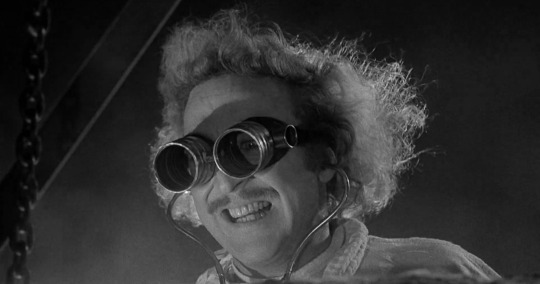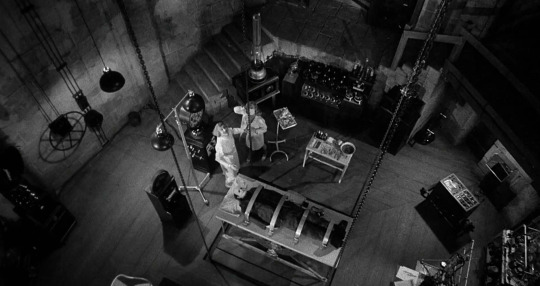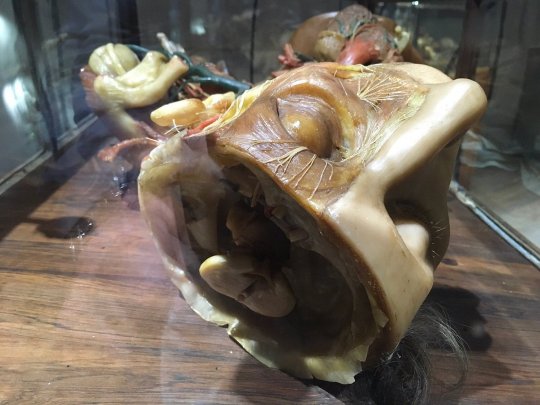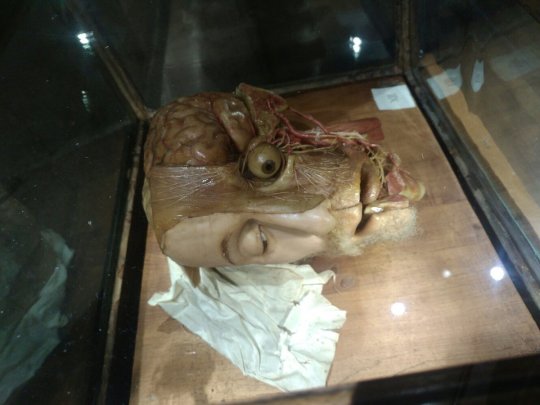Video
youtube
OGGI È - 25 aprile Giornata Internazionale del DNA
0 notes
Text

Giovanni Maria Grilli ha compiuto 6 anni oggi!
0 notes
Video
youtube
Best Italian Songs Restaurant|Positive Lounge & Chillout Music for a Goo...
0 notes
Text

What happens in your brain during anxiety:
Anxiety starts when the amygdala in your brain identifies a possible danger.
This leads to the "fight or flight" reaction, with stress hormones such as adrenaline and cortisol being released.
The prefrontal cortex evaluates this threat and decides how to respond.
Anxiety also leads to physical symptoms like a faster heart rate, tense muscles, digestive problems, and weakened immune function, showing the strong link between the brain and body in anxiety.
Credit: smallpocketlibrary
hashtag#biology hashtag#neuroscience hashtag#medicine
3 notes
·
View notes
Text
Qual è una delle cose più antiche che gli umani fanno ancora nella stessa ed identica maniera?
Beh sicuramente il sesso si fa ancora allo stesso ed identico modo rispetto all’antichità.
0 notes
Text

𝗟𝗔 𝗠𝗢𝗥𝗧𝗘 𝗘̀' 𝗜𝗟 𝗣𝗜𝗨̀ 𝗖𝗟𝗔𝗠𝗢𝗥𝗢𝗦𝗢 𝗘𝗤𝗨𝗜𝗩𝗢𝗖𝗢 𝗗𝗘𝗟𝗟𝗔 𝗦𝗧𝗢𝗥𝗜𝗔 𝗨𝗠𝗔𝗡𝗔
(𝗣𝗿𝗼𝗳. 𝗩𝗶𝘁𝘁𝗼𝗿𝗶𝗼 𝗠𝗮𝗿𝗰𝗵𝗶)
La morte è il più clamoroso equivoco della storia umana.
Dai più eminenti uomini di scienza dell’ultimo secolo scopriamo che l’Universo è tutto Pensiero e che la Realtà esiste solo in ciò che pensiamo ✨
L’energia è quella manifestazione che fa accadere le cose e gli eventi. Essendo di carattere vibrazionale essa si manifesta in una incommensurabile vastità di forme e di aspetti. Dietro tutte queste apparenze si cela una realtà legata a un campo di frequenze comprese in bande, ciascuna delle quali ha uno sbocco nel panorama delle cose materiali che noi vediamo.
Sofisticate tecnologie dimostrano che l’uomo non muore, quando sembra separarsi dalla sua carica energetica che lo vivifica, perché ciò che si stacca dal soma migra e fluisce verso altre locazioni.
Il nostro apparato sensoriale è limitato e quindi inadeguato a permetterci di percepire la realtà al suo livello più profondo.
Occorre comprendere che l’anima che sta per trapassare non è il corpo, bensì la vita stessa e che la sua natura non è materica ma spirituale e che al contrario del suo corpo psico-fisico non conosce mutamento, né decadimento.
Inconsciamente non possiamo sopportare di morire in quanto sappiamo che non è possibile farlo. Quando l’Io ben centrato ne ha la suddetta visione, allora siamo fuori dal paradigma spazio-temporale.
Il tutto dipende dalla qualità del nostro livello di coscienza.
Se non modifichiamo il nostro atteggiamento mentale, se non cambiamo lo stato della nostra visione del mondo, non potremo scegliere il mondo successivo, ma ci troveremo a ripetere ciò che siamo qui con le stesse difficoltà e le stesse limitazioni.
1 note
·
View note
Text



Could the use of the Smartphone increase the incidence of Glioblastoma Multiforme cases? French oncologist call it "Phonegate",please be careful with your kids!
1 note
·
View note
Video
youtube
Dr. Marc Arazi "Phonegate" Cell Phone Radiation Tests of France Violate ...
0 notes
Link
Myocarditis-induced Sudden Death after BNT162b2 mRNA COVID-19 Vaccination in Korea: Case Report Focusing on Histopathological Findings
Abstract
We present autopsy findings of a 22-year-old man who developed chest pain 5 days after the first dose of the BNT162b2 mRNA vaccine and died 7 hours later. Histological examination of the heart revealed isolated atrial myocarditis, with neutrophil and histiocyte predominance. Immunohistochemical C4d staining revealed scattered single-cell necrosis of myocytes which was not accompanied by inflammatory infiltrates. Extensive contraction band necrosis was observed in the atria and ventricles. There was no evidence of microthrombosis or infection in the heart and other organs. The primary cause of death was determined to be myocarditis, causally-associated with the BNT162b2 vaccine.
142 notes
·
View notes
Text










Young Frankenstein (1974)
Director: Mel Brooks
Cinematographer: Gerald Hirschfeld
137 notes
·
View notes
Text

Inside the brain of a psychopath. (I mean literally)
What made Bernie Madoff tick? The guy amiably chatted with life-long friends over dinner as he drained their life savings. Or Jeff Dahmer, who befriended his victims, lured them to his apartment and then had them for dinner. It’s always been disturbing yet fascinating: The Bard got it right when he wrote that one may smile and smile and be a villain.
One neuroscientist, James Fallon, spent much of his career studying the brains of psychopaths and sociopathic criminals. According to the bible of the mental health profession, Diagnostic and Statistical Manual of Mental Disorders: Sociopaths and psychopaths fall into a category of mental illness called antisocial personality disorder. These are the type of people who use manipulation and seemingly reckless behavior to get what they want. They display little or no empathy (the ability to see things from another’s point of view). Sociopaths are often described as hot-headed bullies and psychopaths are seen as cold-hearted snakes.
After a detailed study of the brains of sociopathic criminals using PET scans (an imaging technique that evaluates the metabolic activity of different brain regions), Fallon discovered a brain imbalance. In 2014, he described a dearth of activity in the area of the prefrontal cortex (the brain area just above the eyes, responsible for executive functions), At the same time, in these sociopaths, he determined the amygdala (part of the limbic system, involved in emotions and memories) may be more active than normal. The increased activity in the amygdala of psychopaths was confirmed by the findings of researchers in Wisconsin (ironically, the birthplace of Dahmer) using functional MRI studies. Fallon contends that, in normal people, the frontal region puts a brake on the amygdala, curbing sociopathic behavior.
Fallon then took things a step further. As detailed in his book, The Psychopath Inside: A Neuroscientist's Personal Journey into the Dark Side of the Brain, he analyzed brain PET scans of relatives and descendants of violent criminals (including his own brain) and compared them to the brains of psychopaths he had previously studied. He determined that the brain changes in the prefrontal cortex and the amygdala may be passed down from generation to generation (the psychopath apple doesn’t fall far from the sociopath tree). Fallon was less than pleased to learn that he himself had inherited not only his steely blue eyes, but the brain of a psychopath!
In 2019, Spanish scientists described additional anatomical changes in the brains of psychopaths. It turns out, it’s not simply that specific regions of the brain are affected, but also the circuitry that links them. The amygdala (located in the temporal lobe) may be thought of as the hub (center of the circuit) of a brain socialization network. The circuit connects the amygdala to the prefrontal cortex, then runs to the posterior cingulate cortex (an area of the brain that integrates executive functions and emotion) and precuneus (a part of the brain that allows one to feel in control of one’s actions and events in the external world) then heads back to the amygdala. Using functional MRIs, the researchers determined that, during a moral challenge, this circuit functions anomalously in psychopaths, which results in an emotional flow breakdown.
3 notes
·
View notes
Video
youtube
Smooth Jazz • 3 Hours Smooth Jazz Saxophone Instrumental Music for Grown...
5 notes
·
View notes
Video
Benny Golson Funky Quintet - That's Funky (1995/2021)
0 notes
Photo










Nel 1801 il professor Francesco Boi, docente di anatomia umana nelle Facoltà di Medicina e di Chirurgia (all'epoca ancora divise in due corsi) dell'ateneo cagliaritano, chiese e ottenne dal viceré di Sardegna Carlo Felice di Savoia, il permesso di recarsi in viaggio di studio per approfondire e affinare le sue conoscenze.
Si recò dunque nelle città italiane sedi delle più prestigiose facoltà di medicina, tra le quali Pavia e Pisa. A Firenze ebbe modo di frequentare il Gabinetto Anatomico dell'arcispedale di Santa Maria Nuova, diretto dal professor Paolo Mascagni, illustre anatomista dell'epoca. Dall'esperienza fiorentina nacquero le famose cere anatomiche, che l'artista Clemente Susini tra il 1803 e il 1805, nel laboratorio di ceroplastica del Museo della Specola, modellò sulla base delle dissezioni su cadaveri praticate dal Boi.
Nel 1805 le cere arrivarono a Cagliari, acquistate da Carlo Felice per il suo museo di antichità e storia naturale, ospitato nel Palazzo Reale.[2]
Entrate in possesso dell'università, le cere anatomiche vennero trasferite nel 1858 a Palazzo Belgrano, sede dell'ateneo, e affidate in custodia al docente di anatomia[3]. Nel 1923 sono nuovamente spostate, questa volta all'interno del nuovo Istituto di Anatomia, in via Porcell.
La raccolta delle cere del Susini negli anni '60 fu riparata personalmente dal direttore dell'istituto di Anatomia umana Luigi Cattaneo e riportate all'antico splendore [4]. Nel 1964, prima di lasciare Cagliari per Bologna, Cattaneo curò la preparazione della prima edizione del catalogo delle cere anatomiche cagliaritane, poi pubblicato nel 1970 dall'Editore Sansoni.[5]
Nel 1991 per l'interessamento del curatore della collezione, il professor Alessandro Lodovico Riva e del rettore dell'Università, il professor Duilio Casula, le cere del Susini vengono collocate in esposizione permanente nella "Sala pentagonale" della Cittadella dei musei, in piazza Arsenale.
Nel 2010 alcune fotografie delle cere cagliaritane sono state scelte per un atlante di anatomia umana russo[6].
Parte della collezione di cere compare nel film del regista Enrico Pau L'Accabadora, del 2015.[7]
6 notes
·
View notes
